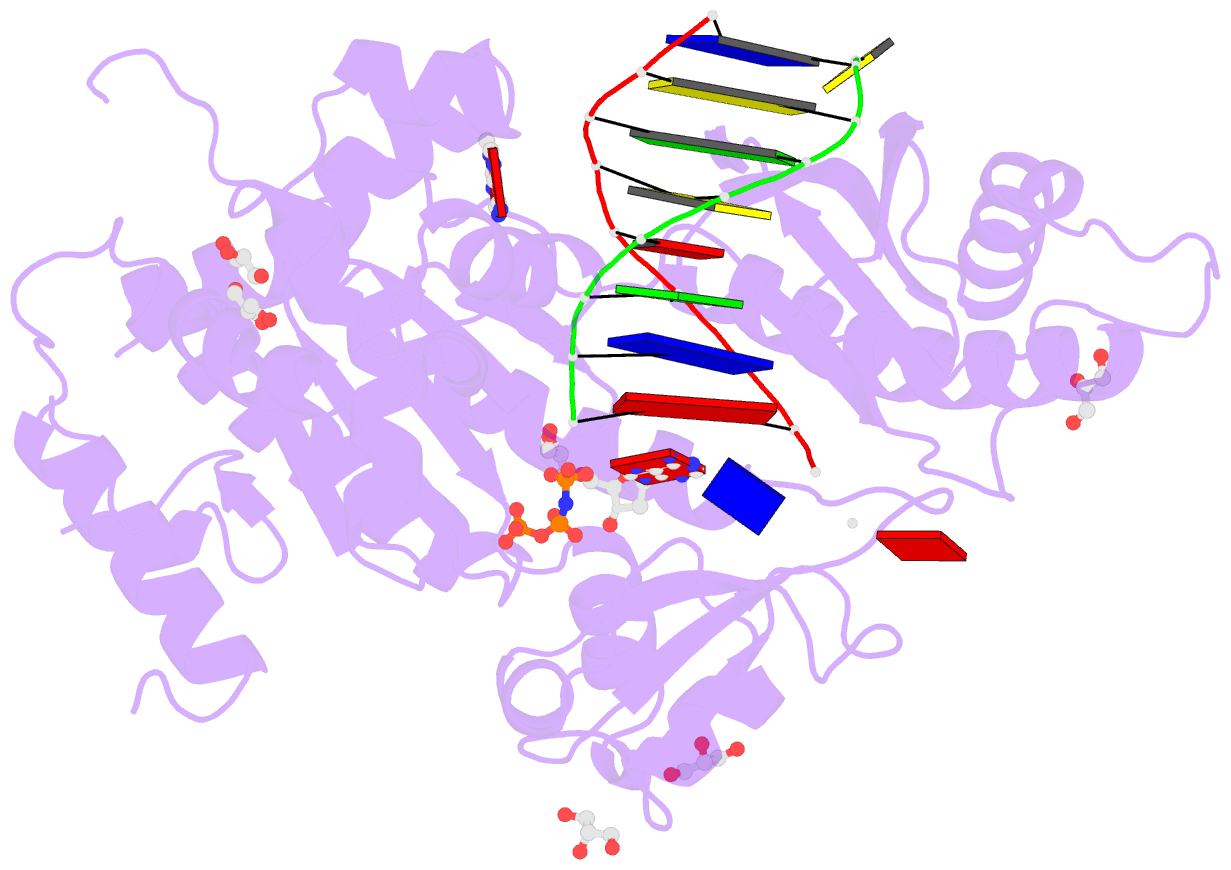Summary information and primary citation
- PDB-id
- 3mr3; SNAP-derived features in text and JSON formats;
DNAproDB
- Class
- transferase-DNA
- Method
- X-ray (1.75 Å)
- Summary
- Human DNA polymerase eta - DNA ternary complex with the 3't of a cpd in the active site (tt1)
- Reference
- Biertumpfel C, Zhao Y, Kondo Y, Ramon-Maiques S, Gregory M, Lee JY, Masutani C, Lehmann AR, Hanaoka F, Yang W (2010): "Structure and mechanism of human DNA polymerase eta." Nature, 465, 1044-1048. doi: 10.1038/nature09196.
- Abstract
- The variant form of the human syndrome xeroderma pigmentosum (XPV) is caused by a deficiency in DNA polymerase eta (Poleta), a DNA polymerase that enables replication through ultraviolet-induced pyrimidine dimers. Here we report high-resolution crystal structures of human Poleta at four consecutive steps during DNA synthesis through cis-syn cyclobutane thymine dimers. Poleta acts like a 'molecular splint' to stabilize damaged DNA in a normal B-form conformation. An enlarged active site accommodates the thymine dimer with excellent stereochemistry for two-metal ion catalysis. Two residues conserved among Poleta orthologues form specific hydrogen bonds with the lesion and the incoming nucleotide to assist translesion synthesis. On the basis of the structures, eight Poleta missense mutations causing XPV can be rationalized as undermining the molecular splint or perturbing the active-site alignment. The structures also provide an insight into the role of Poleta in replicating through D loop and DNA fragile sites.





